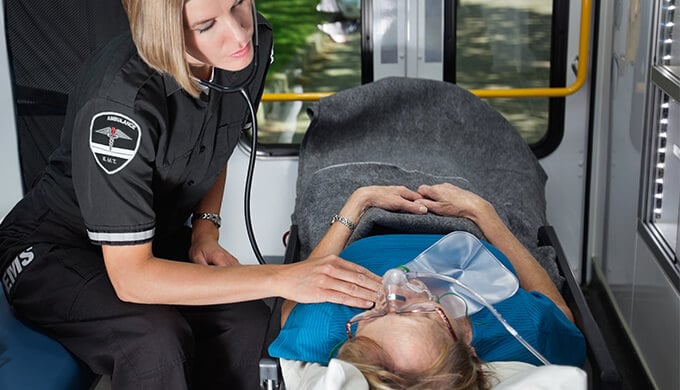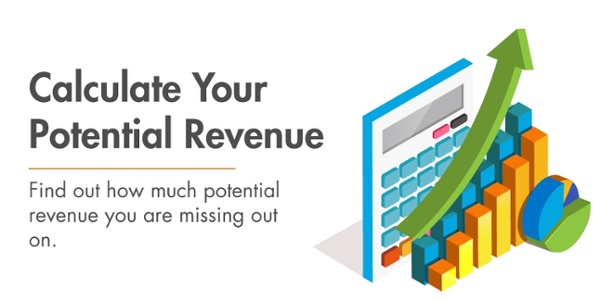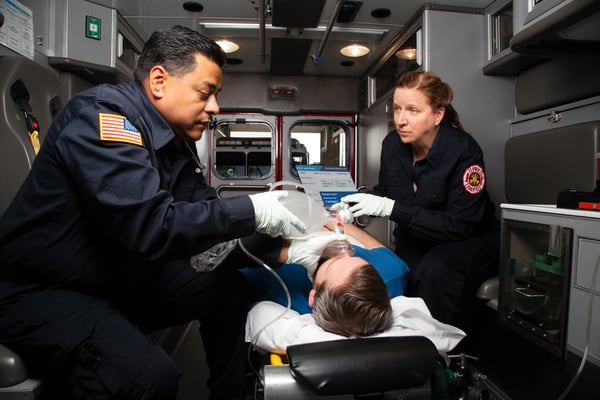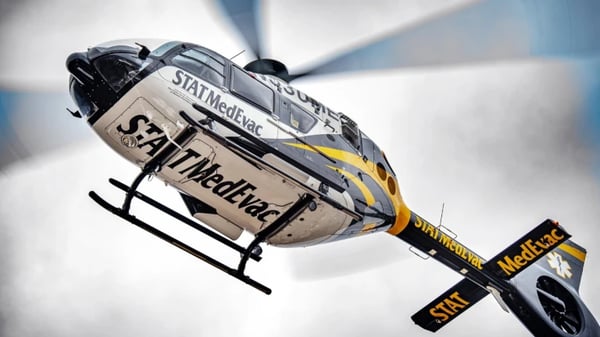News Alert: New ePCR Integration Simplifies EMS Data Management and Enables Better Care Coordination
Want to Get Paid? Ensure Field Crews Complete Compliant Trip Reports
What is the quickest way to get EMTs and paramedics to roll their eyes? Tell them how important their documentation is to reimbursement, or, talk about how the company won’t get paid unless they document more/better/enough
Was this information valuable?

What is the quickest way to get EMTs and paramedics to roll their eyes? Tell them how important their documentation is to reimbursement, or, talk about how the company won’t get paid unless they document more/better/enough. Nope, won’t work. The organization’s need for money is generally not a motivator. EMTs and paramedics didn’t get into this business because of the money.
But ambulance services do need to get paid. The fact of life is that it’s necessary to have compliant trip reports. Compliance is the law, and it’s the only way to protect revenue integrity. So, what’s the best approach? Appeal to what does matter to field providers – patients and the communities they serve. Teach crews WHY they document and how their documentation is related to the patient: to create a good patient record, to be able to communicate to others about the patient and their condition, to QA our care so that we learn to improve response, and to enable statistical tracking of what we do to better serve the community.
Every trip by ambulance must be medically necessary where the patient is taken to a covered destination that is the closest appropriate facility to meet their needs. In our daily audit work, we sometimes see really long trip reports, but the documentation doesn’t provide the most relevant information. Light medical necessity documentation haunts many providers. The easiest question to teach crews to answer is, “tell us why the patient needs you.” Crews don’t need to write more; they need to write the right things. Documentation is best when it objectively describes why the patient needs an EMT or paramedic at their side. What is it about the patient’s condition that indicates they need an ambulance (and not a wheelchair van)? If those questions are answered, the important issue of medical necessity will be met.
Emergency Ambulance Documentation
The focus on medical necessity has long been a non-emergency issue. The landscape has changed. These days, emergency services are likely to be targeted for audit scrutiny. Yet we still see resistance among some emergency providers regarding this critical topic. We’ve talked with countless emergency providers who believed that the nature of their work as emergency responders was reason enough to support why their documentation might be less in-depth. It was thought that documentation of a call for chest pain or respiratory distress was enough support of the emergency and subsequent emergency billing. Unfortunately, that isn’t the case.
Yes, it’s tough to document emergency calls. Emergency providers are constantly on the run, with calls coming back-to-back – there are never enough hours and there are never enough people. But, if organizations intend to get paid for those calls AND that payment comes from taxpayer dollars, the documentation rules must be followed. Novitas is the Medicare contractor for approximately 25 percent of all Medicare beneficiaries in the United States. They have a newish (Oct. 1, 2015) Local Coverage Determination (LCD) for Ambulance that provides detailed guidance on emergency documentation. Even if you aren’t covered by Novitas, their documentation guidance is well worth reading. The Novitas LCD specifically addresses emergency topics such as the importance of documenting specific monitoring and treatments and why they were “required, ordered and performed/administered.” The LCD also says that if a treatment was given or cardiac monitor applied without sufficient documentation to support why this was done, then payment at that level service isn’t justified as follows, “…That a treatment (such as oxygen) and/or monitoring (such as cardiac rhythm monitoring) were performed absent sufficient description of the patient's condition (to demonstrate that the treatment and/or monitoring were medically necessary) is inadequate on its own merit to justify payment for the ambulance service…”
Read Know Your Levels of Service for Accurate & Compliant Claims
I recommend the review of dispatch protocols and ensure that everyone in the field and billing understands how they work. There are elements of emergency documentation (how dispatched or the performance of an ALS assessment), which can make a difference in the level of reimbursement – if the regulations and definitions are followed.
Documentation Slips
I have seen tremendous improvement in signature compliance – more patient signatures are captured and signature compliance on Physician Certification Statements (PCS) improved for many providers. It’s time now to “fine tune” further to keep compliance at the highest standards. If the PCS was signed, make sure there is a corresponding printed or typed name to go with the signature. Look to see that the document was dated. If your patient is unable to sign and a representative’s signature was obtained, remember to note the medical or mental reason that prohibited the patient from signing.
Implement a strong addendum policy so that the occasional miss on a trip report can be addressed. Make sure there is a time deadline by which documentation needs to be complete.
The Intersection of Documentation & Billing
Consider cycling members of the field crew through the billing office for a day. They can answer questions, explain trip report documentation and, most importantly, come to a fine appreciation of the obstacles faced by billing.
Billers are often frustrated by documentation. But, there may not be a documentation problem; there may be a reading problem. Billers tend to focus on the narrative section of the patient care report. Teach billers to review the entire trip report. Information about the performance of an ALS assessment or the patient’s advanced Alzheimer’s may be located some place other than the narrative. It’s a bonus when they find payer information squirreled away in the report!
Have billing and operations get together occasionally. A simple meeting can be helpful to improve work flow. It helps both sides understand the other’s issues and work toward a resolution for all concerned. (If there is a lot of tension, consider setting ground rules so that it’s a “meeting” not a gripe session.) Perhaps billing had no knowledge of the problems the field encounters with a specific facility. A conversation will explain why getting the PCS form properly completed for patients from that facility is such a problem. Or maybe operations didn’t know how important it was for emergency billing to have access to dispatch information.
Checks & Balances
The best way to monitor documentation is through internal auditing. Many organizations have strong QA programs that look at clinical performance. Indeed, that is an important process. There also needs to be a regulatory oversight process. Internal auditing supplemented by the occasional external review will go a long way to help maintain compliance. If billing if outsourced, talk to the billing company to learn about their internal audit process. Next, consider an external audit – have someone independent of your billing and documentation process look and report their findings and recommendations back to you.
Documentation compliance must be ongoing. The steps outlined here will help meet that important goal!
Related Posts
4 Must-have Data Points for Dispatch-Billing Alignment and Maximum Reimbursement
How STAT MedEvac Connected Device, Software, and Data Technology To Enhance QA and Elevate Care
ZOLL Pulse Blog
Subscribe to our blog and receive quality content that makes your job as an EMS & fire, hospital, or AR professional easier.
ZOLL Pulse Blog
Subscribe to our blog and receive quality content that makes your job as an EMS, fire, hospital, or AR professional easier.








